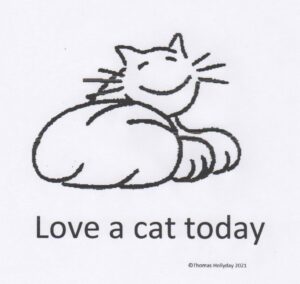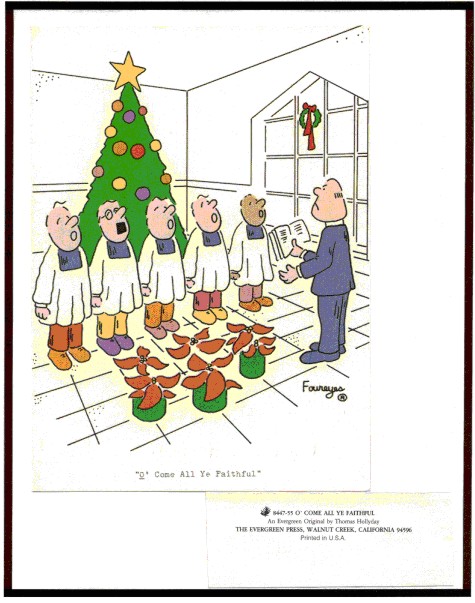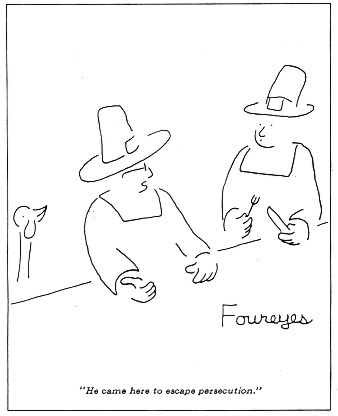Puddles 4.2
The PUDDLES newsletter is devoted to education about providing daily fresh drinking water to animals. It is mailed free upon request to our customers.
From the Editor
This issue features a new bibliography we have assembled on wildlife in the backyard. See Book Reviews. The migration of many species into what is referred to as “the suburban food larder” is increasing as the natural habitat of this wildlife in the more remote areas is being taken away. So we have to begin to learn how to live with our guests. Fortunately there are lots of folks interested in the issue. Write for the results of the Tufts conference on living with wildlife-see address in Tracks. More news of a mystery nature. Deformed wildlife is continuing to show up in lakes around the country. See Of Earth Sun and Water. We just hope that the powers that be in our society are concerned enough to try to find out the cause of this mystery. You may also be interested in our review of the book, Lake Smarts, which tells us about all the ways we can improve our lakes and ponds for wildlife. See Book Reviews. There’s lots more so enjoy your copy of PUDDLES.
HELP! We think the news in this PUDDLES fills a niche not being served by other newsletters. Help us spread this news to other readers so that we can help more animals. Post this issue or put a mention of it in your resources guide in your own magazine, newsletter or WEB site. Thanks
CHIRPS
American Birding Association Regional Conference Boise, Idaho, June 9-13, 1997. 800-850-2473
Audubon Medal Award Dinner, 11/19/96, Rev. Morton, Dean of St. John’s, is honored.
Export of pesticides banned in US kills migratory birds. See Audubon, Sep;-Oct 96, 50-56, 94-95.
Wetlands International is devoted to conservation of the world’s wetlands. Contact 1. Davidson, Wetlands Intl., 7 Hillton Ave., Ottawa, Ont, 613-722-2090.
Code of Birding Ethics, American Birding Association. Copies available at 800-850-2473.
Mycoplasma gallisepticum eye infection is spreading to American Goldfinches and Downy Woodpeckers. Autumn 96 Cornell Birdscope. 607-254-BIRD.
Water for birds is discussed in article in Wild Bird, Nov. 96 page 10-11 with list of accessory suppliers.
Midway Atoll Christmas Bird Count will take place 12/29/96-1/5/97 on this new National Wildlife Refuge and World War Two historic site.
Keeping birding notes is easy when you follow the guide of John Rakestraw in Birding, Feb. 96, 53-55
“Cool, cool water my way” by Sandra Stevens in Bird Watcher’s Digest, July-August 96. It is a method to save the runoff cool condensation from the house air conditioner for birds and seems to make sense.
“Build an Advanced Water Feature” by Scott Shalaway in WildBird, July 96. Discusses the differences in prefabricated and do-it-yourself projects to construct a small pool and running stream and waterfall in your backyard.
Of Earth, Sun and Water
Solar 1997, April 25-30, 1997. 1-303-443-3130.
Mars. For those of us who think over population is part of the ecology problem of the planet, we’ll want to watch the most early stages of of Mars exploration, in hope that it may someday be part of the answer. Good sites to check: http://mpfwww.jpl.nasa.gov/mpf/marswatch/html. or email randerson@jpl.nasa.gov. Sky & Telescope, 12/96.
“The Puzzle of Declining Amphibian Populations,” By Andrew R. Blausetein and David B. Wake, Scientific American, April 1995, draws attention to the decline and suggests causes may be destruction of local habitat as as well as global depletion of the ozone layer. One interesting conclusion is that if” habitat modification occurs slowly enough- as it did for 3000 years in western Europe- amphibians can adjust and even adapt to human induced alterations. But many of the changes such as rises in ultraviolet levels and in the amounts of pollutants in the environment have occurred so rapidly that species with long generation times often cannot adapt quickly enough.” Deformed frogs being described in newspaper articles seems to be a follow on to the above item. Here’s what we know so far. Frogs with birth defects have been found in Vermont, Minnesota, Wisconsin, and Quebec. Frogs are bioindicators meaning that their exposure to the environment can give warning of toxic problems, especially since they live in water. Scientists don’t know why this is happening. Theories include the idea that farm pesticides are getting into the water as well as the idea that there are significant changes in solar radiation.
We found that the Minnesota Pollution Control Agency, 520 Lafayette Road, St. Paul, MN 55155-4194 602-297-3363, attn: Mark Gernes, is a good source of information on this matter. They are doing a study of the frogs paid for by the State of Minnesota and should have some results in the future. There are some WEB pages with data. The school kids in Minnesota who first found deformed frogs out there keep a page: mncs.k12.,mn.us/frog/frog.html. Another site is the Center for Global Environmental Education, Hamline University, ST. Paul, MN: www.hamline.edu/depts/gradprog/ cgee.progs/cgee.frogs/Frog.main.html. By far the most complete report this subject is Rachel’s Environment and Health Weekly by e-mail at Internet: erf@rachel.clark.net. which gives references to recent pesticide studies.
Extensive ecosystem study shows overall risks by each state. See article by R. Peters and R. Noss, Defenders, Fall 1995, 16-27.
“What Good is a Wetland” by Ted Williams in the Audubon Nov-Dec. 96, 43-53. Much about the need to have wetlands so we can purify drinking water.
Every kilowatt hour not used prevents air emissions of 5.8 grams of sulfur dioxide which turns into sulfuric acid rain, 2.5 grams of nitrogen oxide which turns into nitric acid rain and 1.5 pounds of carbon dioxide which is greenhouse gas and smog. from Current Waves, the Water Foundation, Summer 86 VII,II.
American Wetlands Conference, VA May 7-9, 96. Call Terrene, 703-548-5473, terrene@gnn.com
Ecological pest management. from National Research Council. 317-494-9555, kyw@ctic.purdue.edu.
Ground Water Disinfection Rule announced by EPA. A variety of contaminants and disinfectants will be regulated for the first time. See Water Update at http://www/epa.gov/ow.
“Pesticides in Ground Water Current Understanding of Distribution and Major Influences,” is available from US Geological Survey, US Government Printing Office. For summary see Aquifer, The Groundwater Foundation, Sep. 96, 402-434-2740.
Note: Always consult your licenses veterinarian for specific advise for your particular animal’s water needs.
Web Notes
http://petsforum.com Petsforum is a CompuServe sponsored WEB site for pet owners. It has good libraries of research material, and an electronic marketplace.
http://www.emagazine.com E OnLine is an environmental site by E. Magazine. See Green Living Section and Marketplace.
http://petstation.com Petstation is an internet home base for animal people. It has Bird Barn, Cat Cabana, Dog Domain, Fish Fair, Herp Hacienda, Horse Heaven and Small Animal Medley. Well thought out Teen Talk, Seniors Only and Funny Bones are new. Marketplace includes some classifieds with hot buttons direct to manufacturer home pages. Very well done pages.
http://netvet.wustl.edu Dr. Ken Boschert developed this page. Electronic Zoo is part of the Netvet Veterinary Resources. We worked through a list to research what was there on cats. Came up with direct links to magazines such as CATS.
http://www.acmepet.com Acmepet is a guide to pets on the internet. Has Pet Time News, Marketplace, Welcome Wagon, Multimedia Gallery, What’s New, Club Acme-that’s where you can do real time talking. We tried it for a while. Delightful.
http://www.petgold.com This is Petgold and we entered the standard version. It is primarily sales items, listed under General Store, K9 Center, Feline Paradise, Equestrian Center, The Aviary, Aqualand, Exotics Unlimited, Vet Gold. Shelters and Humane Societies we were pleased to see listed.
http://www.yardcare.com “What’s your yard care problem?” Produced by the Toro Company this has answers on grass, weeds, leaves, pests, gardening and new lawns. We received a good description of evapotranspiration, how much water grass will keep. Good site.
http://wildbird.com site of John Gardner, founder of Wild Bird Marketplace. Much good wild bird information. Emphasis is on bird information.
http://www.econet.apc.org/econet/ econet has given a decade of support to ecological sustainability and environmental justice. Very research oriented. Covers all kinds of subjects including habitats and species, seas and water, toxics and water. Links to other sites.
Tracks
“Living with Wildlife,”Tufts Center for Animals. An important seminar. Nov. 15, 96. 508-839-7991. email dpease@opal.tufts.edu.
Providing for Your Pets: In the Event of your Death or Hospitalization, a booklet for $2. Alley Cat Allies. Email alleycat@igc.apc.org.
Flea products: how dangerous are they? See CATsumer Report, May-June 1996. 800-968-1738.
Symposium on Strategy for Oral Rabies Vaccination of Wildlife, 12/96 Univ. of Georgia, Athens, 706-542-6645. This is on oral rabies vaccination for wildlife. Should the vaccine by used provincially (local non-organized use) or strategically (an organized control program)? Those of us who love raccoons and wildlife will be listening to see if we can get safely packed supplies of the vaccine for our own yards.
Flying Circus, article by Jeanette Bogren on use of collies as humane way to deter wild geese from nesting, ASPCA Animal Watch, Fall 96.
Disaster preparedness for animals has been developed by The California Veterinary Medical Assoc. See Veterinary Product news, Feb. 1996.
Book Reviews
Lake Smarts, The First Lake Maintenance Handbook, Steve McComas, Terrene Institute, 1717 K. Street, Washington, DC 20006. Covers aquatic weed control, algae control, fish and sediment topics, on site wastewater and a variety of projects that interested people can do to help lakes. A hands-on book for improving lakes and ponds for wildlife and people. Throughout there are lists of suppliers for the hard-to-find weed rakes and tools. Good lists are available for finding beneficial plants. Aquascaping to control algae and criteria for erosion control are covered in an easy to read manner. Projects of great interest are building nesting habitats for wildlife. Practical and very useful.
Stokes Field Guide to Birds, Donald and Lillian Stokes, Little Brown, Boston, 1996. Look up your bird sighting in this easy to carry guide and you’ll find a full color picture, voice, type of seed preferred, size and identification marks, habitat, and whether an endangered species. There’s also a quick guide to get you started in finding the type of bird. Lives up to its billing as a bird guide for the 21st Century.
Special bibliography on living with wildlife:
Care of the Wild, Feathered and Furred, Mae Hickman, Maxine Guy, Kesend, New York, 1973.
Pocket Guide to The Humane Control of Wildlife in Cities and Towns, Hodge, HSUSA, Helena, MT, 1991.
Living with Wildlife, Diana Landau, Shelley Stump, California Center for Wildlife, San Rafael, CA, 1994.
Attracting Backyard Wildlife, Bill Merilees, Voyageur Press, Stillwater, MN, 1989.
Noah’s Garden, Stein, Boston, Houghton, 1993. “Winter’s Wild Interlopers,” article in Country Living Magazine, by Cathy Johnson, November 1994.
List of wildlife zoological veterinarian associations, Veterinary Product News, 4,11/96, 800-667-2679.
Chickadees, Tits, Nuthatches and Treecreepers, Harrup and Quinn, Princeton, 1995. We could not resist this book because we love chickadees. You’ll find out here how our black capped friends’ vocalizations approach human language. The detail and artwork on these Sittidae, Certhiidae, Paridae, and Aegithalidae families is rewarding for the researcher.
PUDDLES is published by Happy Bird Corporation, PO Box 86, Weston, MA 02493, manufacturer of Solar Sipper animal watering stations. Copyright Happy Bird Corp. 2005. Persons concerned about the availability of fresh drinking water for animals are eligible for a free subscription.







